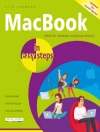Get started printing out 3D objects quickly and
inexpensively!
3D printing is no longer just a figment of your
imagination. This remarkable technology is coming to the masses
with the growing availability of 3D printers. 3D printers create
3-dimensional layered models and they allow users to create
prototypes that use multiple materials and colors. This
friendly-but-straightforward guide examines each type of 3D
printing technology available today and gives artists,
entrepreneurs, engineers, and hobbyists insight into the amazing
things 3D printing has to offer. You’ll discover methods for
the creation of 3D printable objects using software, 3D scanners,
and even photographs with the help of this timely For
Dummies guide.
* Includes information on stereolithography, selective sintering,
fused deposition, and granular binding techniques
* Covers the potential for the transformation of production and
manufacturing, reuse and recycling, intellectual property design
controls, and the commoditization of traditional products from
magazines to material goods
* Walks you through the process of creating a Rep Rap printer
using open-source designs, software, and hardware
* Addresses the limitations of current 3D printing technologies
and provides strategies for improved success
3D Printing For Dummies is the must-have guide to make
manufacturing your own dynamic designs a dream come true!
Tabla de materias
Introduction 1
Part I: Getting Started with 3D Printing 7
Chapter 1: Seeing How 3D Printers Fit into Modern Manufacturing
9
Chapter 2: Exploring the Types of 3D Printing 23
Chapter 3: Exploring Applications of 3D Printing 41
Part II: Outlining 3D Printing Resources 61
Chapter 4: Identifying Available Materials for 3D Printing
63
Chapter 5: Identifying Sources for 3D-Printable Objects 81
Part III: Exploring the Business Side of 3D Printing
99
Chapter 6: Commoditizing 3D Printing 101
Chapter 7: Understanding 3D Printing’s Effect on
Traditional Lines of Business 117
Chapter 8: Reviewing 3D Printing Research 131
Part IV: Employing Personal 3D Printing Devices 143
Chapter 9: Exploring 3D-Printed Artwork 145
Chapter 10: Considering Consumer-Level 3D Printers 157
Chapter 11: Deciding on a Rep Rap of Your Own 169
Part V: Creating a Rep Rap 3D Printer 199
Chapter 12: Assembling Structural Elements 201
Chapter 13: Understanding Rep Rap Control Electronics 231
Chapter 14: Assembling the Rep Rap Extruder and Rep Rap Upgrades
265
Chapter 15: Identifying Software and Calibrating Your 3D Printer
295
Part VI: The Part of Tens 331
Chapter 16: Ten Ways That Rapid Prototyping Will Disrupt
Traditional Manufacturing 333
Chapter 17: Ten Examples of Direct-Digital Manufacturing and
Personalization 339
Chapter 18: Ten Impossible Designs Created Using Additive
Manufacturing 345
Index 349
Sobre el autor
Kalani Kirk Hausman has spent more than 20 years as an IT consultant, enterprise architect, auditor, and ISO. He currently conducts research on integrating 3D printed materials into educational curricula at Texas A&M University.
Richard Horne (Rich Rap) has two decades of experience in the electronics industry as an engineer, marketer, and product designer. In his work with the Rep Rap project, he blogs and shares ideas to make 3D printing easier for everyone to understand.












